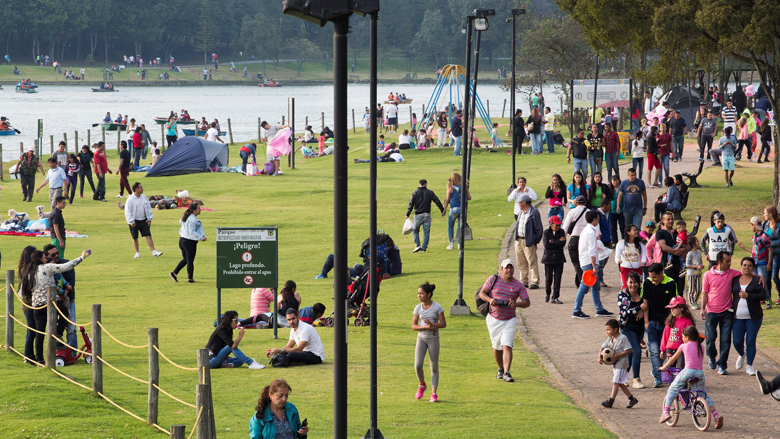Transit systems and public spaces are essential elements of cities. They shape where people live and work, determine their access to services, cultural amenities, and green spaces, and have a profound impact on the quality of life for city dwellers.
More than half the world’s population lives in cities — and the number is only projected to increase. Moreover, COVID-19 has transformed the way people inhabit, and think about, cities. As cities work towards a sustainable recovery from the pandemic, there is an opportunity to rethink approaches to transit systems and public space in order to create more people-centered, environmentally conscious urban communities.
To that end, the World Bank has made urban mobility and sustainable transport key pillars of its development projects. To explore such strategies and potential solutions, Tokyo Development Learning Center held a virtual Technical Deep Dive (TDD), “Vitalizing Urban Neighborhoods and Space through Transit-Oriented Development,” from March 15 to 19, 2021.
COVID-19: What does it mean for the future of urban mobility and public spaces?
Cities have been among the hardest hit by the COVID-19 pandemic. While largely devastating, there have been some positive trends worth highlighting: more and more city dwellers are taking to cycling and walking, paving the way for more walkable cities. Greenhouse gas and carbon emissions are down and air quality has improved. There has also been a renewed interest in public spaces, such as parks, which have proved a boon for socially distanced interactions.
In many cities, private vehicles are the primary mode of transport, and weaning citizens off them is a challenge; however, there is real potential for a comprehensive COVID-19 response that encourages city dwellers to adopt or return to non-motorized transport options, like cycling and walking, which are also, at the same time, healthy, and carbon-neutral ways of getting around.
Some cities, such as Bogotá, have taken this opportunity to reclaim road space for expanded bicycle lanes or sidewalks. In Oakland, California, “soft closures” were set up to discourage thru traffic on several city streets, opening them up for safer pedestrian use and public recreation. These are examples of how cities can seize the moment to jumpstart urban initiatives that prioritize health, community, resilience, sustainability, and inclusivity.
Japan-style TOD: A synergistic approach to transit and urban development
Japan has long championed a particular brand of TOD, led largely by the private sector. Private companies build regional rail lines that bring commuters into the city; they also develop mixed-use areas around the train stations, including residential, office, and commercial complexes. As a result, large investments required to build up rail services are quickly offset by revenue from housing and other projects.
In the Japanese model, brand building is an integral part of building stations, which results in much attention paid to creating attractive rail hubs. An example of this is the Solaria Plaza, in the Tenjin district of Fukuoka. The complex, with shops, restaurants, and leisure facilities is directly connected to the city’s subway system and regional rail lines. It also houses the city’s bus terminal. The amenities and convenience add value to the Tenjin district, and all the nodes along the railway that lead to it.
By revitalizing the areas around transport nodes, public transportation becomes safer and more inclusive; land value increases; and intangible qualities such as civic pride and a sense of place are enhanced.
Japan is part of a global trend that favors the fostering of pedestrian-oriented 15-minute cities, in which citizens can access not only public transport but also jobs, shops, health facilities, schools, and green spaces safely within reasonable walking, or cycling, distance. When designing public space, it is crucial to consider the city’s most vulnerable populations, including women and the elderly, paying special attention to improving last mile connectivity. This includes both safety, adequate lighting, for example, and accessibility, such as well-maintained sidewalks.
To maximize the potential upsides of TOD and urban planning — for city governments, urban residents, and the private sector — it is crucial for practitioners across fields to work together, engaging as many stakeholders as possible.

